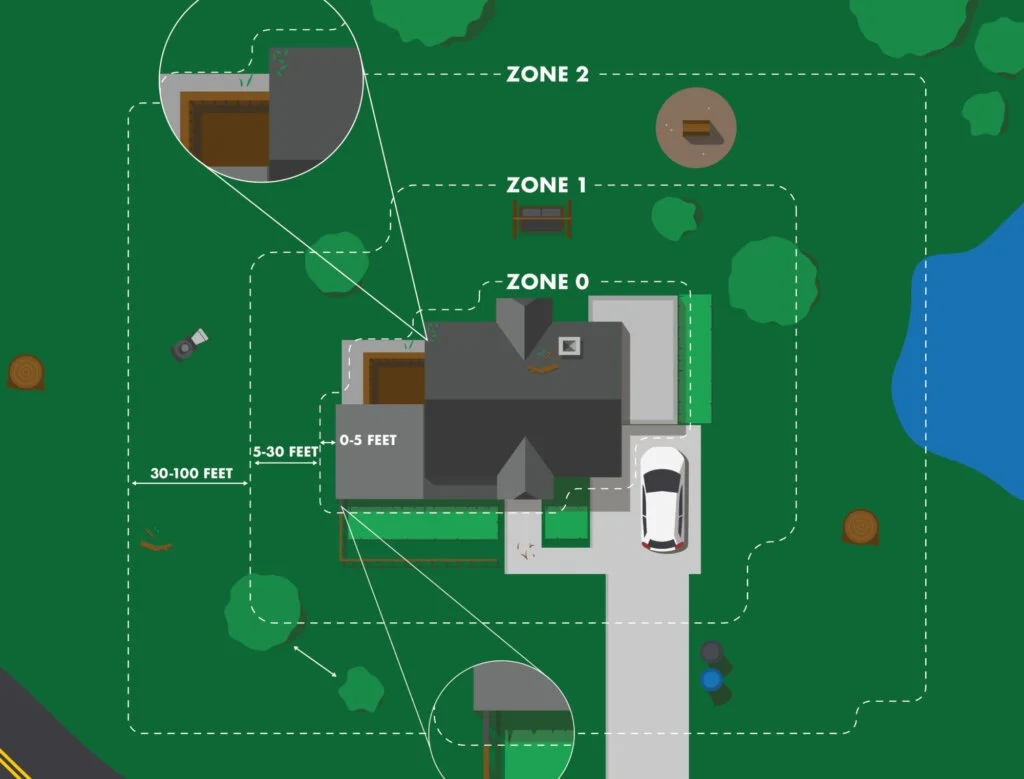San Luis Obispo City Tree Removal Guide: What You Need to Know
San Luis Obispo homeowners face increasing complexities concerning insurance coverage, wildfire risks, and tree management. Understanding detailed city regulations surrounding tree removal and defensible space is essential for maintaining compliance, safeguarding property, and ensuring continuous insurance coverage. This extensive guide provides specific insights into San Luis Obispo's tree removal requirements, protected species, heritage trees, and wildfire safety regulations.
Detailed Tree Removal Permit Requirements
San Luis Obispo enforces stringent regulations governing tree removal to maintain the health and sustainability of the city's urban forest. According to the San Luis Obispo Municipal Code, a Tree Removal Permit is necessary for:
Any street tree, irrespective of its size, located within the public right-of-way.
Private property trees meeting specific size criteria:
Non-native species with a trunk diameter of 20 inches or greater at 4.5 feet above the ground level.
Native tree species, including Coast Live Oak, California Sycamore, California Black Walnut, and various willow species, with a trunk diameter of 10 inches or greater at 4.5 feet above ground level.
Trees located within 25 feet of a creek bank.
Trees involved in any development or construction project, regardless of species or size.
Any tree on multi-family residential, commercial, or homeowners' association-managed properties.
Exceptions to Permit Requirements
Homeowners may remove smaller trees without a permit if they fall below the outlined size thresholds and are not within sensitive areas such as creekside buffers or public rights-of-way. Specifically, a non-native tree under 20 inches in diameter or a native tree under 10 inches in diameter, located in single-family residential zones, can generally be removed without formal authorization unless additional regulations apply.
Protection of Native and Heritage Trees
San Luis Obispo places high importance on preserving native tree species, given their ecological and cultural significance. The city's tree regulations specifically protect mature native trees such as Coast Live Oaks, Sycamores, California Black Walnuts, and native willow species. Additionally, the City has established a Heritage Tree Program to recognize and preserve trees of exceptional historical, ecological, or cultural value. Heritage Trees, once designated, generally cannot be removed unless there is conclusive evidence provided by a certified arborist or city official that the tree poses a safety risk.
Defensible Space Requirements and Wildfire Mitigation
California’s increased wildfire frequency underscores the importance of adhering to strict defensible space guidelines. Properties in San Luis Obispo designated as part of Fire Hazard Severity Zones are subject to regulations set forth under California Public Resources Code Section 4291, enforced rigorously by the San Luis Obispo City Fire Department. These include:
Maintaining a minimum of 30 feet immediately surrounding structures, termed as a "lean, clean, and green" zone, free from highly flammable vegetation.
Extending management practices out to 100 feet from structures or property lines to reduce fuel loads. Practices include thinning vegetation, pruning tree limbs up to at least six feet from the ground, and removing all dead or dying plant material.
Balancing Urban Canopy Preservation and Fire Safety
San Luis Obispo city regulations reflect a commitment to balancing the preservation of its urban forest with essential wildfire mitigation practices. Typically, the city encourages property owners to explore tree preservation through careful pruning, canopy thinning, and understory clearance before considering full removal. In cases where removal becomes necessary, decisions are collaboratively made between the City Arborist and the Fire Marshal to confirm the safety justification. Emergency tree removals due to immediate hazards are permitted and expedited, provided that the city receives appropriate notification and documentation afterward.
Steps to Follow for Tree Removal
San Luis Obispo homeowners intending to remove trees, particularly for wildfire mitigation or due to tree health concerns, should:
Engage a certified arborist to evaluate and document the tree’s condition, potential risk factors, and proposed mitigation methods.
Directly contact the City Arborist in San Luis Obispo to confirm permit requirements and procedures.
Collaborate with the San Luis Obispo City Fire Department to ensure proposed removals comply fully with defensible space regulations.
Anticipate mandatory replanting requirements. San Luis Obispo frequently conditions removal permits upon the planting of replacement trees to maintain the city's tree canopy.
Navigating San Luis Obispo's tree removal and wildfire regulations demands detailed understanding and adherence to specific city policies and state guidelines. Homeowners should proactively consult city officials, arborists, and fire safety experts to ensure their property management decisions are fully compliant and conducive to long-term property safety and insurance coverage.
Sources:
San Luis Obispo Municipal Code, Section 12.24.090 (Tree removal)
Urban Forestry, City of San Luis Obispo. https://www.slocity.org/living/natural-resources/trees-and-urban-forestry
California Public Resources Code, Section 4291 (Defensible space requirements)
Fire Hazard Severity Zones, City of San Luis Obispo. https://www.slocity.org
Cal Fire Defensible Space Guidelines. https://www.fire.ca.gov
Stay tuned as we continue our series exploring tree removal and wildfire safety regulations across all incorporated cities and unincorporated areas within San Luis Obispo County.


